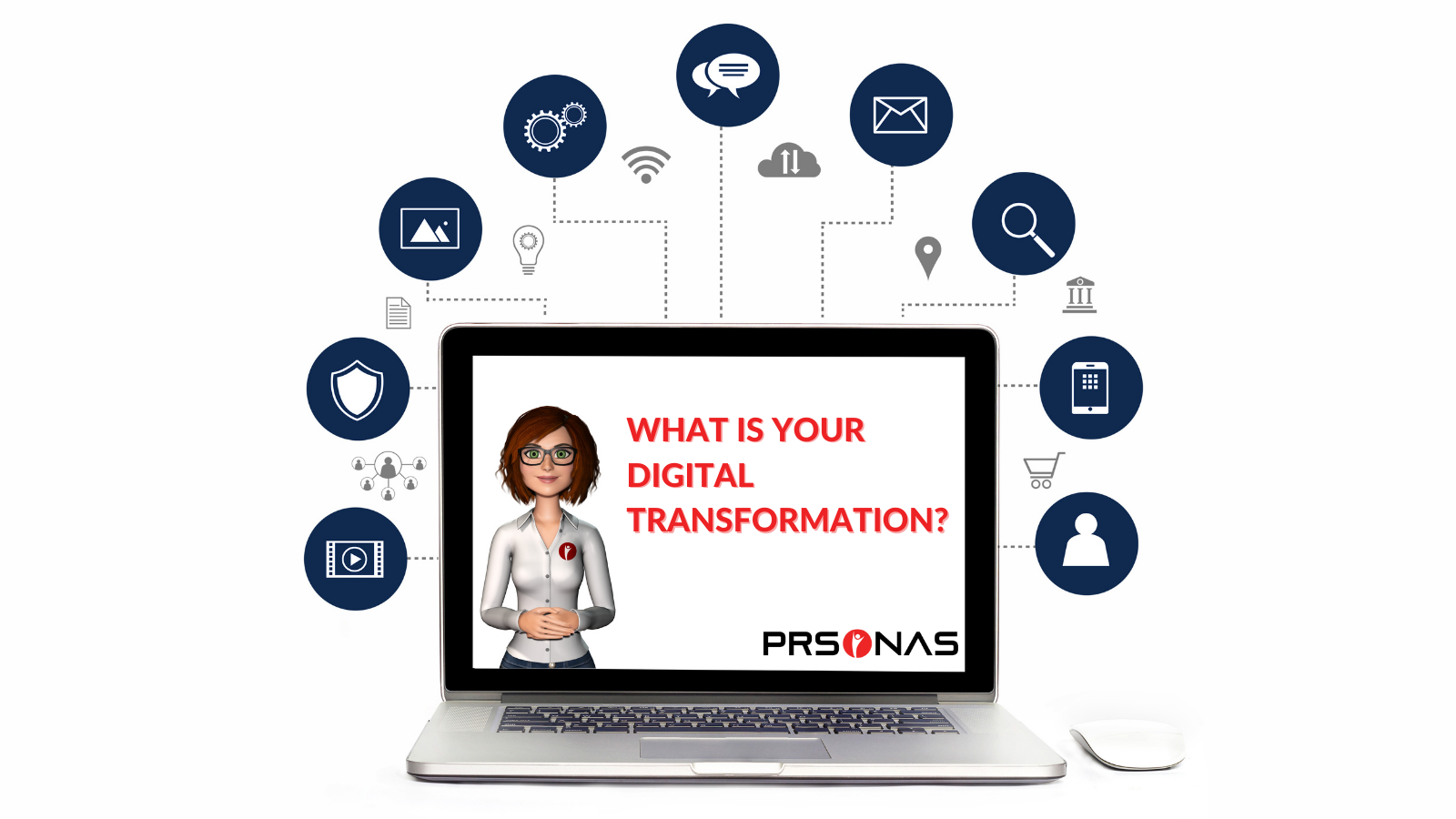Digital Transformation is the latest buzzword that keeps being tossed around in the business world - but do you know what it is? And why is it so integral to running a business in the modern world? Let’s dive into it.
When talking about digital transformation, it’s essentially just another way of saying “business transformation” while taking into account the ever-changing landscape of technology that each and every person and business must continue to implement in their everyday lives. There is no transforming your business without the use of technology in this day and age.
The global digital transformation market is projected to grow from $469.8 billion in 2020 to $1,009.8 billion by 2025, at a compound annual growth rate! - GlobeNewswire
Within a relatively short amount of time, the world has transitioned from only being able to get product or customer service help in person or over a phone call to now being able to order your groceries on an app and having them delivered to your front door. The world has changed rapidly over the last few generations and then accelerated even more by a global pandemic. Every business needs to take this into account when creating plans for the future, or else they risk getting left in the dust. Customers and employees alike are becoming increasingly used to the convenience and therefore increased productivity that technology can bring.
 Improvement in operational efficiency!
Improvement in operational efficiency!
Think about it- it wasn’t that long ago that if you wanted to buy something you had no choice but to actually get in your car and drive somewhere. And while some people still prefer that, there are also people out there that haven’t been to an actual physical store in months! From a business perspective, think about the opportunity that having an online presence can bring. It allows your customer base to have constant access to your business. Whether it's the middle of the night, while they are at work, or taking a day off, your business is no more than a few clicks away!
Most people have their phones on them at all times during the day. You may even be reading this from your phone! Cell phones are one of the most basic things we can utilize when trying to transform our digital presence. I challenge you to try to think of a single company or business that has zero online presence, no social media, and not even their phone number listed on Google.
It's okay, take your time and get back to us when you find one!
There was a time when having an online presence was a bonus, and didn’t make or break a business, now it’s necessary and expected. Part of digital transformation is figuring out what the next necessary piece of technology will be for your business, that customers come to expect and the steps you need to take to implement that technology for both your customers and employees.
But how?
It’s a big question- what is the next necessary piece of technology currently, and what does the future of technology look like within a company. But thankfully, it’s not one person's or one department's job to figure out! Because every employee and department is going to have different uses for different pieces of technology. It’s up to everyone to figure out what would be the most useful. In the past, the IT department might be the ones figuring these things out. That’s changed!
Someone working at the front desk might find a digital greeter useful, while someone in the marketing department might not be able to find a use for it. Instead, they might utilize an online team organization platform. Or for example, in fast food, having kiosks available might mean less wait time, or fewer lines since all of the employees can focus on making meals or dealing with more specific customer concerns.
Every single job can benefit from digital transformation. Just two of the top ways digital transformation plays a key role are:
 Customer Experience: Today's consumers have more options than ever. Businesses must not only offer innovative products & services but also provide meaningful interactions and experiences that will delight customers & build brand loyalty!
Customer Experience: Today's consumers have more options than ever. Businesses must not only offer innovative products & services but also provide meaningful interactions and experiences that will delight customers & build brand loyalty!
 Employee Experience: It's not about giving your workforce the most up-to-date apps and devices. It's about creating an easy, modern, and more satisfying experience for your most important asset, your employees.
Employee Experience: It's not about giving your workforce the most up-to-date apps and devices. It's about creating an easy, modern, and more satisfying experience for your most important asset, your employees.
It can help to increase productivity, efficiency, and create a better environment not just for your customers but for your employees as well! It’s a continuous cycle, happier employees that are able to be more productive and less stressed will be able to show up better for your customers who in turn also have a more positive and memorable experience.
 Improvement in meeting customer experience expectations!
Improvement in meeting customer experience expectations!
A world where these things are the norm is no longer on the horizon, it’s already here! The companies that have a well thought-out strategy for their digital transformation are already there and looking even further. It’s not just about what is available today, right now. It’s about what is possible in one year, five years, ten years.
It’s about constantly looking ahead.
While digital transformation and implementation of the latest technology in this current landscape is important, what is even more important is picking and choosing what will be the most beneficial for your company and your customers. Adopting new technology just for the sake of it can end up doing the opposite and make your business seem out of touch with the consumer. And implementing all of the new technologies available at once can be jarring to everyone.
Here are some things to think about when developing a strategy.
- Where can we add extra value?
- How can we improve the day-to-day lives of our customers?
- How can we improve the day-to-day lives of our employees?
- How can we utilize technology to increase productivity?
- What technology is currently available to us to accomplish these things?
- What technology is in the works and will be available in the future that may help us accomplish our goals long term?
- How can we be a part of our customers day to day lives?
Another important thing to keep in mind when creating a strategy for digital transformation is the level of “technological literacy” of your average customer.
What kinds of technology is your customer base comfortable with? How could you implement new technology in a way that is seamless for the customer and doesn’t take a learning curve?
Taking it back to the classic kiosk we are seeing pop up in fast food restaurants more and more. They take you through the ordering process step-by-step with large text and pictures so you know exactly what you are getting. They explain each step in easy terms to make it as user-friendly as possible. Now imagine if instead, we just placed extra POS systems for customers to ring up their own orders? The only people who wouldn’t have an issue would be the people who had worked with one before. But they’ve taken this same idea of allowing customers to ring up their own order and made it simple enough that anyone can do it whether they are 8 years old or 80 years old.
Digital transformation can be implemented in many ways, and it doesn’t take reinventing the wheel. It can be as simple as taking existing technologies and using them to help customers' needs.
No matter what direction your company takes, prioritizing digital transformation can help to secure your company’s future in this ever-changing technological landscape.
How does your digital transformation strategy stack up?

Companies that have a higher digital maturity reported

45% revenue growth
compared to 15% for lower maturity companies.
 Julia Corbin
Julia Corbin

 Julia Corbin
Julia Corbin
